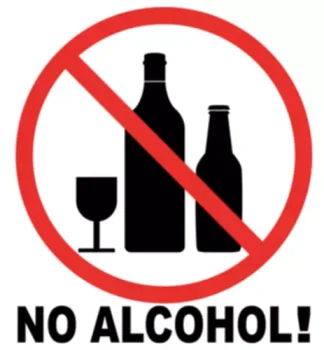Halfway houses are often designed specifically for those that received treatment for addiction to drugs or alcohol while in prison. Halfway houses can be government funded or run by private organizations that receive government grants. Residents may sleep in dorms, and attendance can be court-ordered for a set period.
Luxury Rehab: Costs and Expectations
There is no in-house treatment or requirement to attend a specific recovery program, but 12-step participation is popular in Oxford Houses. A new house member must be interviewed by current residents and must receive an 80 percent vote of approval to be accepted. Residents elect officers every six months, do chores and pay rent. Living in a sober environment helps you develop new habits and routines, taking what you learned during drug or alcohol rehab and applying it in your daily life. This is where the rubber starts to meet the road in addiction recovery.
Who Should Consider A Sober Living Home?
By providing separate homes, facilitators can provide gender-specific care to improve the chances of success. Sober living homes in the U.S. aren’t covered by insurance and are often paid for out of pocket. Payment plans, scholarships, grants and government-funded programs may be available for residents facing financial hardship. Organizations that offer SLH scholarships include CLEAN Cause Foundation and Ben Meyer Recovery Foundation, per Dr. Kennedy and Clark. Halfway houses traditionally serve individuals recently released from incarceration, acting as a halfway point between prison and their own residence.
Group Therapy for Substance Abuse & Addiction
Discover more energy, restful sleep, and improved wellness with a plan designed to fit your life. It includes building relationships, supporting others and practicing healthy ways to overcome triggers. You can also look into Oxford Houses, which provide all recovering users the opportunity to develop comfortable sobriety without relapse.

Housing NYC Управление людских ресурсов
This peer support system encourages open dialogue, sharing of experiences, and mutual encouragement, creating a network of support that’s invaluable during recovery. Most sober living homes must charge a fee to maintain the house, pay taxes, and pay staff. However, they aim to make these fees (paid in the form of rent) affordable.
Sober Living Home & Oxford House Rules
Substance use treatment providers may offer oversight in some instances, although this is not always the case. Some sober living communities in California may also offer specialized programs for those with co-occurring mental health disorders or other unique needs. The staff employed by sober living communities will be vetted and credentialed, giving you the confidence of a robust support system. Staff at sober living communities may also provide connections to other licensed and accredited professionals relevant to your recovery journey.
What is the Difference Between Sober Living and Halfway Houses?

This indicates the need for greater health education of drug users and the implementation of relapse and overdose death prevention programs. Sober Living houses can assist in educating drug users and reducing the chance of relapse. One study into Oxford House recovery homes found that they reduce relapse by providing closer monitoring and referring additional services to residents with a history of severe addiction. However, sober living homes are generally less expensive than inpatient treatment centers. But, many sober living homes have mandatory support group meetings. Some sober living facilities provide substance-free transitional housing for only men or only women, meaning men live with men and women live with women.
- In these programs, it’s customary to receive plastic chips as you progress to the one-year mark, at which time you receive a bronze coin.
- In a sober living program, you’ll live in a supervised home with a group of others who are also on the road to recovery.
- In general, individuals with a history of vagrancy, incarceration or inadequate social support are at high risk of relapse.
- These may include regular drug testing, mandatory participation in house meetings, and adherence to a curfew.
What are Sober Living Homes?
- Sober living homes are an effective resource for individuals who have completed treatment and are ready to begin their lives in recovery.
- Some sober living homes are covered by private insurance, government funding or Medicaid.
- Whether you’re transitioning from an inpatient facility or looking for additional support post-rehab, a sober living home could be an excellent step towards sustaining your sobriety.
- When you see your husband’s mistress with a burgeoning belly and you’re a blabbermouth on TV with a successful show, you know what’s about to happen.
- Whatever the source of the referral, take a tour of the facility and talk to the people living there to decide if it’s the right fit for you.
However, some halfway houses are designed to reduce drug relapse rates for high-risk individuals leaving incarceration. Sober living in California has become an increasingly popular option for individuals in recovery from addiction. Halfway houses, on the other hand, are typically more structured and may be mandated as part of a court-ordered treatment program. Halfway houses are often reserved for those who have completed a residential treatment program and require additional support and supervision as they transition back into the community. Residents in halfway houses may be subject to more stringent rules, including mandatory curfews and drug testing. Maintaining sobriety can be a difficult process, however, a sober living house may provide you with the kind of structure and support you’ll need to maintain your sobriety.
Sober Living Homes & Oxford Houses
Both sober living homes and halfway houses support people recovering from substance use disorders. Both of them also offer access to resources that can help you with early recovery. Sober living houses and halfway houses are often used interchangeably as they both provide a substance-free living environment for those suffering from addiction.
